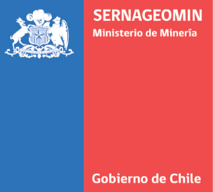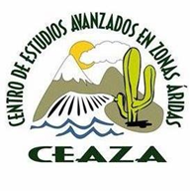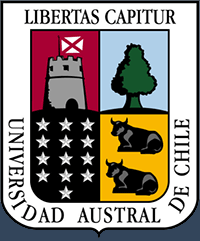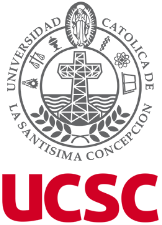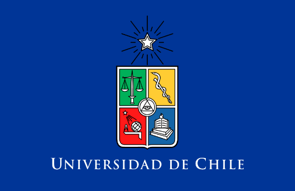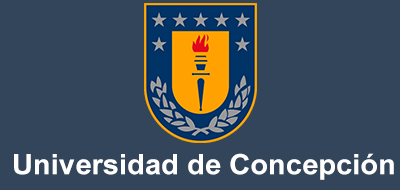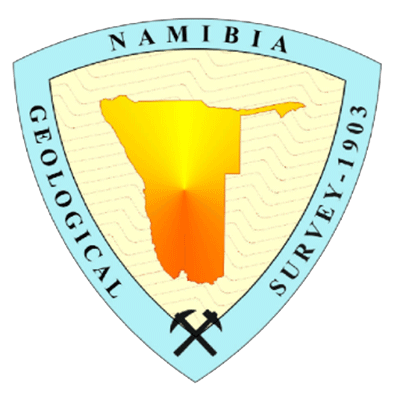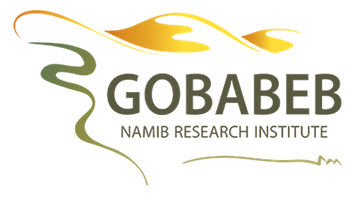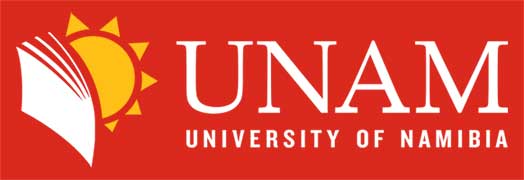Project ended after 2nd Phase
Super‐ensemble of simulations of climate and aeolian processes in the Atacama Desert on geological time scales and their implications for life at the dry limit
Research areas: Atmospheric Science and Oceanography
Principal investigator: Jun.-Prof. Dr. Stephanie Fiedler, Prof. Dr. Yaping Shao
Project Info: Phase 2
Climate change in the Atacama Desert profoundly impacts on its land surface evolution and biodiversity. In the 1st phase, A03 found that changes in the atmospheric circulation and the sea-surface temperatures (SST) strongly affect the water vapour supply to the Atacama Desert and the aeolian processes. However, the key drivers of the past climate shifts in the Atacama Desert and the response mechanisms of the regional climate to the forcing remain unclear. Now in the 2nd phase, A03 aims to elucidate the forcing and response mechanisms to advance our process understanding by using a hierarchy of models with different complexities. To this end, we will use contemporary climate model results from the coupled model inter-comparison project phase 6 (CMIP6), create a new super-ensemble of high-resolution model simulations with WRF(-chem), and perform dust-emission measurements with the Portable In-Situ Wind ERosion Lab (PI-SWERL) in the Atacama Desert.
Phase 1
Aeolian transport: Statistical-dynamical modelling of aeolian processes in the Atacama Desert over geological time scales and their implications to life at the dry limit
Research areas: Atmospheric Science and Oceanography
Principal investigator: Jun.-Prof. Dr. Stephanie Fiedler, Prof. Dr. Yaping Shao
Aeolian processes on geological time scales are closely related both to climate change and bio-ecological evolution. In the Atacama Desert where fluvial/glacial processes are non-existent, aeolian processes virtually govern the evolution of the land surface and the proxies of planetary geomorphology.
On the other hand, land-surface conditions (e.g. soil wetness, vegetation cover and surface crust) strongly influence the rate of aeolian transport. Bacteria and fungi not only transform minerals to soil, but also control surface crust formation and evolution, while on the other hand, wind erosion or deposition rates may prohibit and suppress the growth of biogenic crusts and vegetation. Also vegetation profoundly affects biogenic crust and aeolian aerodynamics. Thus, climatic, aeolian and bio-ecological processes have tightly coupled feedbacks which are key to characterizing the tipping points between biotic and abiotic Earth surface systems, establishing long-term terrestrial climatic records and estimating the rates of Earth surface and biological evolution. The central task of A03 is to develop a conceptual framework for investigation of the interactions between aeolian and biological processes in the Atacama Desert and to develop for the first time a numerical system for modelling how such interactions on geological time scales. New aeolian and biogenic modules will be developed and integrated in the existing dust modelling system that has been under development at the University of Cologne over the past years. A major theoretical and technical challenge is also how to run a dynamic model over a period of 106 years with a resolution high enough to represent aeolian transport in the Atacama. In A03, we propose a statistical-dynamic downscaling approach, i.e., the probabilistic distribution of climate will be determined and for each climate mode, aeolian transport will be simulated. The results will then be combined statistically based on the relative frequency of the climate modes. The main outcomes of the project include (1) a basic concept and model framework which allow the integration of understanding on aeolian-biologic processes, and (2) preliminary simulations of aeolian-biological interactions in the Atacama Desert on geological time scales.
Publications
Project A3 - Publications
Articles
Jiang, C., 2024.
Evaluation of precipitation reanalysis products for regional hydrological modelling in the Yellow River Basin.
Theoretical and Applied Climatology. 155, 2605 - 2626. DOI: https://doi.org/10.1007/s00704-023-04758-w.
Shao, Y., 2024.
Adhesion theory and model for air humidity impact on dust emission.
Aeolian Research. 66, 32767 - 32767.
Reyers, M., Fiedler, S., Ludwig, P., Böhm, C., Wennrich, V., Shao, Y., 2023.
On the importance of moisture conveyor belts from the tropical eastern Pacific for wetter conditions in the Atacama Desert during the mid-Pliocene.
Climate of the Past. 19 (2), 517 - 532. DOI: 10.5194/cp-19-517-2023.
Wennrich, V., 2023.
Late Pleistocene to modern precipitation changes at the Paranal clay pan, central Atacama Desert.
Zenodo. 1 - 63. DOI: 10.5880/CRC1211DB.68.
Arenas-Díaz, F., Fuentes, B., Reyers, M., Fiedler, S., Böhm, C., Campos, E., Shao, Y., Bol, R., 2022.
Dust and aerosols in the Atacama Desert.
Earth-Science Reviews. 226 (March 2022, 103925), 1 - 26. DOI: https://doi.org/10.1016/j.earscirev.2022.103925.
Contreras, S., Landahur, M., García, K., Latorre, C., Reyers, M., Rethemeyer, J., Jaeschke, A., 2022.
Leaf wax composition and distribution of Tillandsia landbeckii reflects moisture gradient across the hyperarid Atacama Desert.
Plant Systematics and Evolution. 308 (8), 1 - 13.
Vogel, A., Alessa, G., Scheele, R., Weber, L., Dubovik, O., North, P., Fiedler, S., 2022.
Uncertainty in Aerosol Optical Depth From Modern Aerosol-Climate Models, Reanalyses, and Satellite Products.
Journal of Geophysical Research: Atmospheres. 127 (2), 1 - 27. DOI: https://doi.org/10.1029/2021JD035483.
Böhm, C., Schween, J., Reyers, M., Maier, B., Löhnert, U., Crewell, S., 2021.
Toward a Climatology of Fog Frequency in the Atacama Desert via Multispectral Satellite Data and Machine Learning Techniques.
Journal of Applied Meteorology and Climatology. 60 (8), 1149 - 1169. DOI: 10.1175/JAMC-D-20-0208.1.
Böhm, C., Reyers, M., Knarr, L., Crewell, S., 2021.
The Role of Moisture Conveyor Belts for Precipitation in the Atacama Desert.
Geophysical Research Letters. 48 (24), 1 - 10. DOI: 10.1029/2021GL094372.
Fiedler, S., Putrasahan, D., 2021.
How Does the North Atlantic SST Pattern Respond to Anthropogenic Aerosols in the 1970s and 2000s?.
Geophysical Research Letters. 48 (7), 1 - 11. DOI: https://doi.org/10.1029/2020GL092142.
Fiedler, S., Wyser, K., Rogelj, J., Van Noije, T., 2021.
Radiative effects of reduced aerosol emissions during the COVID-19 pandemic and the future recovery.
Atmospheric Research. 264 (15 December 2021, 105866), 1 - 11. DOI: https://doi.org/10.1016/j.atmosres.2021.105866.
Reyers, M., Böhm, C., Knarr, L., Shao, Y., Crewell, S., 2021.
Synoptic-to-Regional-Scale Analysis of Rainfall in the Atacama Desert (18°–26°S) Using a Long-Term Simulation with WRF.
Monthly Weather Review. 149 (1), 91 - 112. DOI: 10.1175/MWR-D-20-0038.1.
Shao, Y., 2021.
Modelling Soil Moisture In Hyper-Arid Conditions.
Boundary-Layer Meteorology. 179, 169 - 186.
Böhm, C., Reyers, M., Schween, J., Crewell, S., 2020.
Water vapor variability in the Atacama Desert during the 20th century.
Global and Planetary Change. 190, 1 - 18. DOI: 10.1016/j.gloplacha.2020.103192.
Fiedler, S., Crueger, T., D'Agostino, R., Peters, K., Becker, T., Leutwyler, D., Paccini, L., Burdanowitz, J., Buehler, S. A., Uribe Cortes, A., Dauhut, T., Dommenget, D., Fraedrich, K., Jungandreas, L., Maher, N., Naumann, A. K., Rugenstein, M., Sakradzija, M., Schmidt, H., Stielmann, F., Stephan, C., Timmreck, C., Zhu, X., Stevens, B., 2020.
Simulated Tropical Precipitation Assessed across Three Major Phases of the Coupled Model Intercomparison Project (CMIP).
Monthly Weather Review. 148 (9), 3653 - 3680. DOI: 10.1175/MWR-D-19-0404.1.
Reyers, M., Hamidi, M., Shao, Y., 2019.
Synoptic analysis and simulation of an unusual dust event over the Atacama Desert.
Atmospheric Science Letters. 20 (6), 1 - 9. DOI: 10.1002/asl.899.
Reyers, M., Shao, Y., 2019.
Cutoff Lows over the Southeast Pacific off the Coast of the Atacama Desert under Present Day Conditions and in the Last Glacial Maximum.
Global and Planetary Change. 1 - 12.
Walk, J., Stauch, G., Reyers, M., Vásquez, P., Sepúlveda, F., Bartz, M., Hoffmeister, D., Brückner, H., Lehmkuhl, F., 2019.
Gradients in climate, geology, and topography affecting coastal alluvial fan morphodynamics in hyperarid regions – The Atacama perspective.
Global and Planetary Change. 185 (102994), 1 - 24. DOI: 10.1016/j.gloplacha.2019.102994.
Event Paper
Jaeschke, A., Böhm, C., Reyers, M., Merklinger, F. F., Bernasconi, S., Schefuß, E., Kusch, S., Rethemeyer, J., 2019.
Present and past distribution of fog-dependent Tillandsia vegetation in the hyperarid Atacama Desert.
Geophysical Research Abstracts. Proc. of EGU General Assembly 2019, 21 (EGU2019-9332), April 07 - 12, 2019, Vienna, 1 - 1.
Data
Project A3 - Research Data
Pinto, R., 2024.
PI-SWERL data.
CRC1211 Database (CRC1211DB).
Jiang, C., Reyers, M., Shao, Y., 2024.
Daily Accumulated Total Precipitation from Weather Research and Forecasting (WRF) Model at 6 km Resolution for Atacama Desert from 1990 to 2020.
CRC1211 Database (CRC1211DB). DOI: 10.5880/CRC1211DB.71.
Wennrich, V., Reyers, M., Böhm, C., 2024.
WRF-model derived daily precipitation data Paranal.
CRC1211 Database (CRC1211DB).
Fiedler, S., Putrasahan, D., 2022.
Model simulation data for climate response to anthropogenic aerosol pattern of 1970s and 2000s.
Zenodo. DOI: https://doi.org/10.5281/zenodo.4565589.
Reyers, M., 2018.
WRF Output daily accumulated total precipitation 10km resolution Atacama.
CRC1211 Database (CRC1211DB). DOI: 10.5880/CRC1211DB.20.
Reyers, M., 2018.
WRF Output temperature 3-hourly 10km resolution Atacama.
CRC1211 Database (CRC1211DB).
Reyers, M., 2018.
WRF Output specific humidity 3-hourly 10km resolution Atacama.
CRC1211 Database (CRC1211DB).
Reyers, M., 2018.
WRF Output v-wind 3-hourly 10km resolution Atacama.
CRC1211 Database (CRC1211DB).
Reyers, M., 2018.
WRF Output u-wind 3-hourly 10km resolution Atacama.
CRC1211 Database (CRC1211DB).
Reyers, M., 2018.
WRF Output windspeed 3-hourly 10km resolution Atacama.
CRC1211 Database (CRC1211DB).












